Navigating the costs of trade school is essential for aspiring students seeking to enhance their skills and secure a successful career. With tuition varying significantly based on program type and duration, understanding these expenses is crucial. This guide explores trade school costs, funding options, and how they compare to other educational institutions, empowering you to make informed financial decisions for your future.
1. Overview of Trade School Costs
Trade schools, also known as technical or vocational schools, offer specialized training in various trades, making them an attractive option for many students. The costs associated with trade school can vary significantly based on factors such as the type of program, its duration, and whether the institution is public or private. Tuition can range from a few thousand dollars to tens of thousands, depending on these variables.
Shorter certificate programs typically have lower tuition costs compared to longer associate degrees or diploma programs. Public trade schools often provide reduced rates for in-state residents, while private institutions may charge higher fees. Additionally, students should consider other expenses, such as books, supplies, housing, and living costs, which can add to the overall financial commitment of attending trade school.
2. Common Expenses for Trade Schools
Attending a trade school involves various expenses that can differ significantly based on factors such as program location, duration, and whether the institution is public or private. Understanding these costs is crucial for prospective students to budget effectively for their education.
Tuition and fees for trade school programs can range widely, from a few thousand dollars to tens of thousands. Generally, shorter certificate programs tend to have lower tuition costs compared to longer associate degrees or diploma programs, making them an attractive option for those seeking quicker entry into the workforce.
In addition to tuition, students should consider the costs of books and supplies, which can vary by program. Some trade schools include these expenses in their tuition rates, while others charge them separately. Students may spend anywhere from a few hundred to several thousand dollars on textbooks and specialized equipment.
Other expenses to factor in include housing and the overall cost of living, which can significantly impact a student’s budget. Public trade schools often offer lower tuition rates for in-state residents, while private institutions typically have higher fees. For detailed information on average costs, students can refer to the U.S. Department of Education’s College Affordability and Transparency List.
3. Public vs. Private Trade Schools
Trade schools are categorized into public and private institutions, each offering distinct advantages. Public trade schools typically provide lower tuition rates, especially for in-state residents, making them an attractive option for those seeking affordable education. This financial accessibility can significantly impact students’ decisions when choosing a path for vocational training.
In contrast, private trade schools often come with higher tuition fees, which can be a barrier for some students. Many of these institutions are for-profit, focusing on generating revenue while providing specialized training. Despite the higher costs, private trade schools may offer unique programs or smaller class sizes, appealing to those who prioritize personalized education.
Ultimately, the choice between public and private trade schools depends on individual circumstances, including financial considerations and career goals. Students should carefully evaluate the costs associated with each type of institution, as well as the specific programs offered, to make an informed decision that aligns with their aspirations and budget.
4. Financial Aid Options Available
Trade schools offer a variety of financial aid options to help students manage their educational expenses. These include scholarships, grants, and loans, which can be need-based, merit-based, or a combination of both. Students should explore all available resources, including federal aid through the FAFSA, to maximize their financial support while pursuing their vocational training.
Grants and scholarships are particularly beneficial as they do not require repayment, making them an attractive option for students. Additionally, many trade schools provide work-study programs, allowing students to earn money while studying. Employers may also offer tuition reimbursement incentive programs, further easing the financial burden for graduates who commit to working with them post-completion.
5. Understanding Grants and Scholarships
Trade schools provide various financial aid options, including scholarships and grants, to help students manage educational costs. Grants, such as the federal Pell Grant, do not require repayment and are often based on financial need. Scholarships, available from diverse sources, reward academic achievement or specific skills, enhancing accessibility to vocational education. Completing the FAFSA is crucial for accessing these financial resources.
6. Federal Student Loans Explained
Federal student loans are a vital resource for students pursuing trade school education, offering financial support to cover tuition and related expenses. With competitive interest rates and flexible repayment plans, these loans are designed to ease the financial burden on students and their families, making education more accessible.
There are two main types of federal student loans: Direct subsidized loans, which are available to students with demonstrated financial need, and Direct unsubsidized loans, which do not require such proof. To access these loans, students must complete the Free Application for Federal Student Aid (FAFSA). Additionally, parents can apply for Federal Parent Loans (PLUS Loans) to help cover costs not met by other financial aid options.
- Federal student loans offer low interest rates and flexible repayment options.
- Direct subsidized loans are for students with financial need; unsubsidized loans are available to all.
- Repayment typically starts six months after graduation.
- Completing the FAFSA is essential for loan eligibility.
- PLUS Loans are available for parents of dependent students.
7. Comparing Trade School to College
Trade schools, or vocational schools, focus on equipping students with practical skills tailored to specific careers, offering a more direct path to employment. Programs are typically shorter, lasting from a few months to two years, allowing students to enter the workforce quickly. This targeted approach often results in lower overall costs compared to traditional college degrees.
While trade school tuition can vary widely, public institutions generally offer more affordable rates, especially for in-state residents. Financial aid options, including federal grants and loans, are available to help students manage costs. Community colleges also provide vocational programs alongside general education, making them a versatile choice for those seeking both technical training and broader academic credentials.
8. Tips for Reducing Trade School Costs
Reducing trade school costs can be achieved through several strategies. Researching and comparing schools helps identify more affordable options, particularly public institutions for in-state residents. Part-time enrollment allows for manageable payments while working, and online or hybrid programs can cut commuting expenses. Additionally, saving in advance, buying used tools, seeking employer sponsorship, and considering apprenticeships can further alleviate financial burdens.
In conclusion, trade school is a worthwhile investment in your future, providing essential training for careers in fields like automotive, welding, and diesel. With various financial aid options, including scholarships, grants, and federal loans, students can alleviate the financial burden. By actively seeking these funding opportunities, prospective students can pursue their education and achieve rewarding careers in skilled trades.



